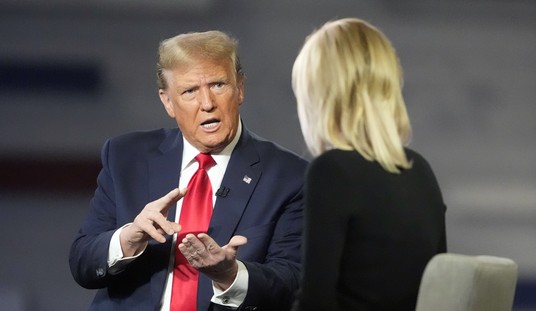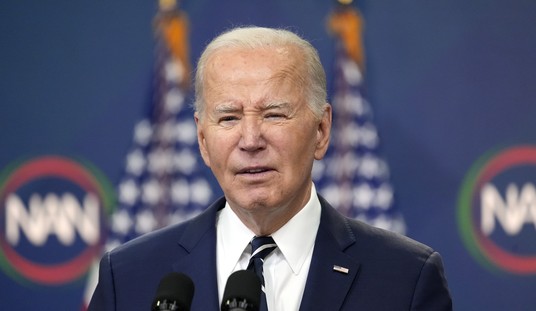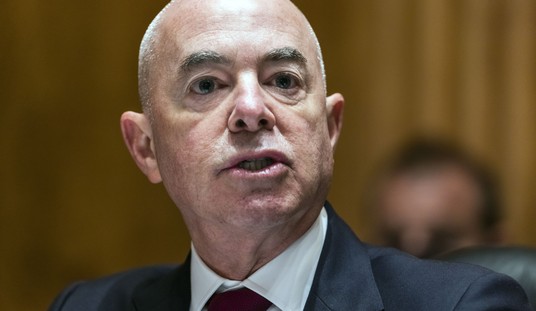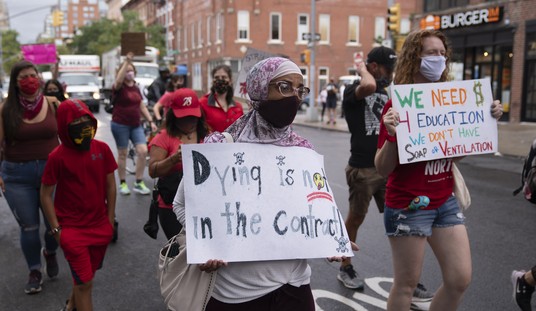“The acceleration in real GDP in the second quarter,” says the Bureau of Economic Analysis, “primarily reflected upturns in exports and in nonresidential fixed investment and a smaller decrease in federal government spending that were partly offset by an acceleration in imports and decelerations in private inventory investment and in PCE.”
As I pointed out after the initial reading of 1.7%, the result was mainly achieved by using an unusually low deflator number in the calculation.
Our own Mike Shedlock said that without an unusual calculation in July to figure GDP for April, May, and June, GDP would’ve come out at 0.8%, versus the administration’s historical average of 0.6%, average annually.
It’s not that we’ve never had quarters that posted 2.5% GDP growth under Obama, it’s just that they’ve often been followed by quarters where GDP growth either contracts or gets petty near contraction.
One of two things is happening here: either the economy is starting to grow on its own, contradicting the whole “sky is falling” Chicken Little routine we’ve heard from government types ever since sequester.
Or… the government is fudging the numbers on GDP to make them look rosier than they are.
I know. I know: Our government? Lying about something?
It seems incredible.
So, I’m guessing that they’re lying about both things.
This reminds me of the quip about the army general staff from British Prime Minister David Lloyd George: "[The General Staff] maintained three sets of casualty figures, one to fool the public, one to fool the Government and one to fool themselves."
Recommended
That isn’t to say that GDP growth hasn’t been stronger since 2010 when Republicans captured control of the House of Representatives and put the brakes on the whole Obama experiment.
At this rate, I'd like to see more sequester, since it seems to be working out so well for the economy.
How do we sequester Obamacare? Helloooo? Anyone? Bueller? Boehner? Boehner?
Source:tradingeconomics.com
GDP is probably expanding because of the little bit of fiscal restraint that we’ve shown since 2010.
It's a good thing to keep in mind when we go back into debt ceiling negotiations. Washington DC is either part of the spending problem, part of the economy problem, part of the morale problem, or they aren't.
Like always, the GOP holds a stronger hand than their leaders know, mostly because the leadership is skeptical of their own arguments.
Of course the days of the weak dollar may be drawing to a close more quickly than people realize. That will hurt export numbers as goods become prohibitive to foreign purchasers. So, GDP could be getting weak soon.
Strength? Weakness? Neither really matters.
Because I’m getting the sense that the Federal Reserve believes the risks associated with continued quantitative easing (QE) far outweigh any possible benefits that can be had from here on out.
After all, we’ve been told over and over that the employment situation is really terrific.
“First-time applications for benefits fell 6,000,” reports the Associated Press, “to a seasonally adjusted 331,000, the Labor Department said Thursday. The four week average, a less volatile measure, inched up 750 to 331,250 after falling to its lowest level since November 2007 the previous week.”
That means that there is “no let-up from the recent pace in employment growth, which has been strong enough to keep unemployment trending down," according to Jim O'Sullivan, an economist at High Frequency Economics via the AP. "If anything, claims are suggesting further acceleration."
Acceleration in what? is the question I'm asking.
And THAT means you can add another set of figures to the government books.
I'm not sure they've fooled the public, but I know the politicians have fooled themselves.
Glad to see they have a set of numbers to fool economists, as well.

























Join the conversation as a VIP Member